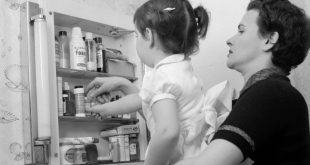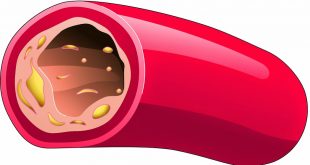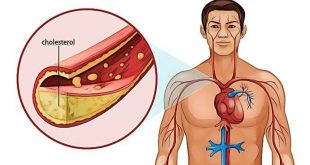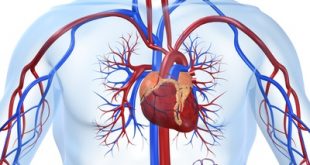Introduction
High blood pressure or hypertension is a risk factor for heart disease. It can quietly damages human body before they develop any symptoms. If left uncontrolled, you may end up with multiple health complications, poor quality of life or even disability.
Fortunately, there are many options or modes of treatment available for hypertension. These are mainly to control blood pressure and to reduce life threatening complications.
Although reducing cardiovascular morbidity and mortality is the main goal of treating hypertension, change in lifestyle is also an important initial step to lower blood pressure, and its value cannot be ignored. The combination of treatment with lifestyle modification is the best treatment to reduce cardiovascular risk and attain goal blood pressure value.
Lifestyle Changes
Current guidelines recommend that people should:
- Exercise at least 30 minutes / day for most days a week
- Maintain normal weight and appropriate BMI ( Body Mass Index )
- Reduce salt intake
- Limit alcohol consumption to not more than 1 or 2 drinks a day
- Reduce saturated fat intake
- Quit smoking
- Reduce stress
- Good sleep hygiene
Lifestyle plays an important role in controlling blood pressure. If it is successfully reducing blood pressure, this may avoid or delay the need to start on medications.
How Effective Are Lifestyle Changes For Controlling Blood Pressure?
1. Maintain normal weight, watch your waistline
Blood pressure often increases as weight increases. Even modest weight loss in overweight people can lower blood pressure. And the benefit of losing weight is long lasting.

Besides losing weight, you should also maintain your waistline. In general, men are at risk if their waist circumference is more than 102cm, while women will be at risk if their waist circumference is more than 89cm
2. Exercise regularly
Regular physical exercise for at least 30-60 minutes most days of the week can reduce your systolic blood pressure (SBP) of about 5mmHg and a drop in diastolic blood pressure (DBP) of about 4mmHg.

Therefore, for people with pre hypertension with SBP between 120-139mmHg and DBP between 80-89mmHg, exercise can help to avoid developing full blown hypertension.
On the other hand, for people who are already with hypertension, exercise can bring down their blood pressure to a safer level.
3. Diet : eat a healthy diet
It is not easy to change your eating habits. But, following these tips, can help you to adopt a healthy diet.

Eating a diet that is rich in whole grain, fruits, vegetables and low fat products can reduce your SBP by an average of 11mmHg and DBP by an average of 5.5 mmHg. This eating plan is known as the Dietary Approach to Stop Hypertension (DASH) diet.
DASH diet is an example of an eating plan which you can incorporate into lifestyle to reduce blood pressure. Here are some tips for you to get started on DASH diet plan:
- Eating more fruits, vegetables and low fat dairy food. Add a serving of vegetables and fruits to your lunch and dinner. Add a serving of fruit to your meal or as a snack.
- Reducing intake of foods that are high in saturated fat, cholesterol and trans fats
- Eating more whole grain products, fish, poultry and nuts.
- Instead of typical snacks, eat unsalted nuts, raisins, low fat or fat free yogurt
- Eat less red meat, limit to 6 ounces/day. Try eating some vegetarian meals
- Use only half of your typical serving of butter, margarine, salad dressing, preferably use low fat or fat free condiment
- Read the food labels carefully and choose food with lower sodium, and food with higher source of potassium, magnesium and calcium.
Keep your food diary:
Writing down what you eat in a week can highlight your own true eating habits. Monitor what you eat, the amount you eat, when and why.
Be a smart shopper:
Make a shopping list before heading to the supermarket to avoid picking up junk food. Always read the food labels when you shop, and try to stick to your healthy eating plan even when you are dining out too.
It is alright to treat yourself occasionally on food you like and enjoy most that is not on the DASH menu. Eating DASH menu does not mean that you have to cut down all the foods that you love.
4. Reduce salt intake
The effects of salt reduction on individuals can be variable. Elderly people are usually more sensitive to sodium intake.
Evidence shows that for individuals with hypertension, a reduced salt diet results in reduction of SBP of about 4 mmHg and DBP of about 2 mmHg on average.
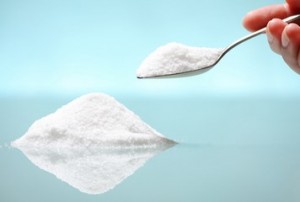
The recommendations for reducing salt or sodium:
Limit sodium to 6 grams or less a day. This is equivalent to less than 1 ¼ teaspoonfuls of salt or 3 teaspoonfuls of monosodium glutamate per day.
- These are few tips to help you decrease salt intake in your diet:
- Track how much salt in your diet, keep a food diary
- Read food labels, choose low sodium alternatives of food
- Avoid addition of salt on table
- Eat less processed food
5. Quit smoking and avoid second hand smoke
This is important in the overall management of patients with hypertension in reducing cardiovascular risk. Smoking can also acutely increase blood pressure. On top of all other dangers of smoking, nicotine in tobacco products can raise blood pressure by 10 mmHg or more for up to an hour after smoking. Try to avoid second hand smoke as it can also put you at risk of health problems.
Smoking cessation has a well documented health benefits and it is recommended in patients with hypertension.Health concerns are usually the ultimate reasons people give for quitting smoking. This is a very real concern; smoking harms nearly every organ of the body.
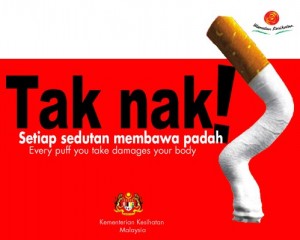
Smoking is both psychological habit and also physical addiction. To address both the habit and addiction, you need to change your behavior and deal with nicotine withdrawal symptoms.
To successfully detach from smoking, you will need to identify and address your smoking habits, the nature of dependency and the techniques that work for you. These questions can help you assess your nicotine dependence: (Modiifed Fagerstrom test).
- How soon after you wake up do you smoke your first cigarette?
- Do you find it difficult not to smoke in places where you shouldn’t such as in school, library or in public transport and public places such as hospital?
- Which cigarette would you most hate to give up, which cigarette do you treasure the most? The first one in the morning or any other?
- How many cigarettes do you smoke a day?
- Do you smoke more during the first few hours after wakingup than during the rest of the day?
- Do you still smoke if you are so sick that you are in bed most of the days?
Medications or agents for smoking cessation can ease withdrawal symptoms and reduce cravings. They are most effective when used as part of a comprehensive quit smoking program monitored by your physician. Options available are nicotine gum, patch or inhaler, SR Buprapion and Varenicline tablet. However, special consideration needs to be given before using any of these agents. You need to consult a doctor before using these agents.
6. Alcohol moderation
Alcohol also has an acute effect in elevating blood pressure. The standard advice is to restrict intake to no more than 21 units for men and 14 units for women per week. 1 unit is equivalent to ½ pint of beer, 100 ml of wine or 20 ml of whisky. The only way to reduce blood pressure effectively is by reducing or stopping alcohol intake altogether

7. Reduce stress
Stress or anxiety can also increase blood pressure temporarily. Good time management, explore the reasons of causing you stressed such as work, family or social causes will help you eliminating your stress. Take some free time and rest or do some enjoyable activities with families or friends to help you cope with your stress in a healthier ways. Breathing exercise, yoga, massage or counselling may also help you to reduce your stress level.

8. Sleep hygiene
Sleep hygiene is putting into practice some simple guidelines in order to achieve an effective sleep at night. Having sufficient night sleep helps people to function well during daytime and sleep hygiene is linked with school and work performance. Improving sleep hygiene is commonly advised for people with medical conditions which according to research, are connected with problems of short duration of sleep. For example, people with depression, heart disease, diabetes, obesity and hypertension.
Hypertensive patients should pay some attention to sleep hygiene as well. You should arrange your rest and sleep. Blood pressure drops naturally while sleeping. And if you have a regular sleeping time, your body can prepare the sequence and will help to control blood pressure.

Certain sleep disorders such as sleep apnoea are associated with hypertension. Chronic, insufficient sleep may raise blood pressure in patients with hypertension, placing them at risk of heart disease and death. Stress hormone levels may increase with sleeplessness, which can activate the sympathetic nervous system, which is a strong player in hypertension.
For patients with chronic sleep disturbances such as insomnia or sleep apnoea may need to consult your doctor and may consider for long term anti hypertensive medications to help counteract the increase in blood pressure that occurs in the early morning hours.
There are some tips for good sleep hygiene:
- Timing
Maintaining a regular time for waking up and establishing a consistent bedtime schedule, but going to bed when not yet sleepy is not advisable.
- Preparation
Regular exercise, limit nicotine and caffeine use during night time, avoid alcohol few hours before bedtime, avoid activities which can stimulate the mind and body such as watching television and computer at least an hour before bedtime.
Taking small dinner at night and hot food before bedtime can stimulate circulation and help from daytime fatigue.
- Environment
Create an environment in the bedroom to be cool, quiet and dark as to establish a conducive environment for sleeping.
References
- Malaysia Clinical Practice Guidelines Management of Hypertension (3rd edition), 2008
- Malaysia Clinical Practice Guidelines on Tobacco Use and Dependence, 2003
- Robert E. Rakel, Textbook of Family Medicine 7th edition, 2007
- Lenny Lopez, E. Francis Cook, Mark S. Horng, LeRoi S. Hicks, Lifestyle Modification Counseling for Hypertensive Patients: Results From the National Health and Nutrition Examination Survey 1999–2004, American Journal of Hypertension (2009); 325–331
- Malaysia Clinical Practice Guidelines on Management of Obesity, 2004
| Last Reviewed | : | 2 March 2016 |
| Writer | : | Dr. Rosmiza Binti Abdullah |
| Translator | : | Dr. Rosmiza Binti Abdullah |
| Accreditor | : | Dr. Ainol Shareha Binti Sahar |
 PENDIDIKAN PESAKIT Kementerian Kesihatan Malaysia
PENDIDIKAN PESAKIT Kementerian Kesihatan Malaysia
